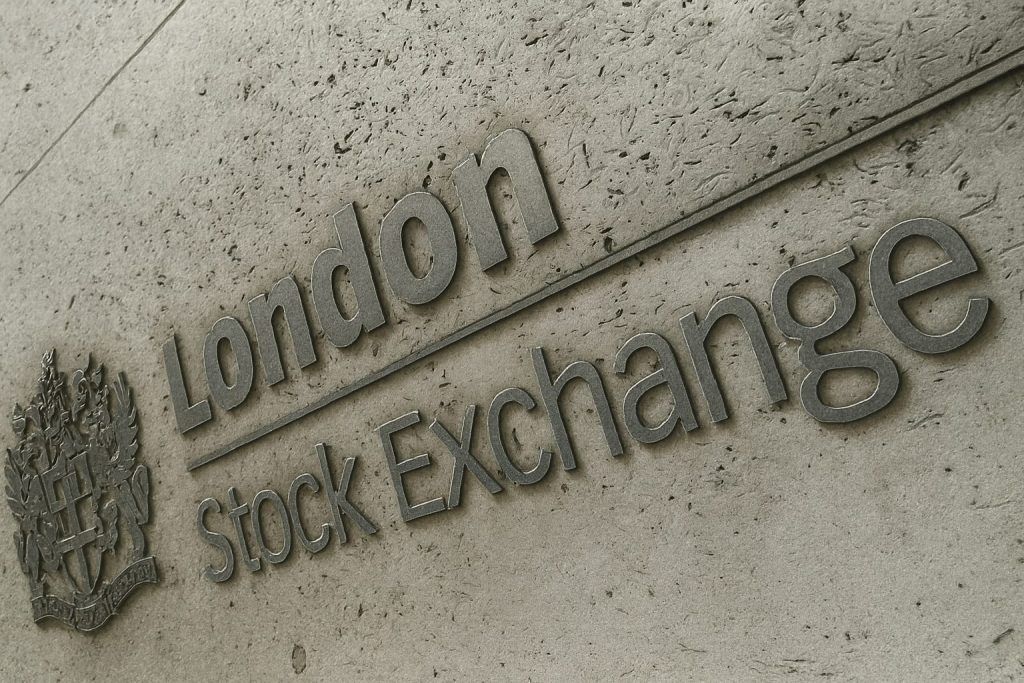- Record-Breaking Rally: Tokyo’s Nikkei 225 stock average closed at an all-time high of 52,411.34 points (↑2.1%) on the latest trading day, marking a record peak and the biggest monthly gain since 1994 [1]. The broader TOPIX index also hit a record closing high at 3,331.83 (↑0.9%) [2]. (Markets were closed on Nov. 3 for a national holiday [3].)
- Growth Stocks Climb: The Mothers Index (growth market) jumped roughly +1.3% in the latest session, reflecting strength in emerging tech stocks [4].
- Tech Leads the Charge: A global AI frenzy powered Japanese tech shares. Chipmakers and electronics surged – Advantest, a semiconductor tester, rocketed 22% mid-week after a bullish profit forecast [5], and Konami skyrocketed +16.1%, with Japan Tobacco up +8.6% and Hitachi +8.5% [6] on Friday’s rally.
- Mixed Sector Performance:Technology and exporter stocks outperformed on optimism over artificial intelligence and a weaker yen, while a few sectors lagged. Automotive giant Toyota dipped ~1.5% amid caution ahead of earnings [7], even as peers like Honda rose on the yen’s decline. Financials and other defensive shares saw milder moves.
- Economic Tailwinds: Investor sentiment got a boost from Japan’s new Prime Minister Sanae Takaichi and her pro-growth agenda – fueling hopes of aggressive fiscal stimulus, especially in AI and tech sectors [8]. A multi-year ¥154/USD low in the yen (following the Bank of Japan’s decision to hold ultra-low interest rates) bolstered exporters’ profits [9].
- Global Cues: Global markets rallied in tandem. News of a $38 billion Amazon–OpenAI cloud deal ignited worldwide AI optimism [10], and optimism over a potential U.S.–China trade truce lifted sentiment [11]. U.S. stock indexes hit record highs, and OPEC’s move to halt oil output hikes kept oil prices near the mid-$60s [12] – a positive for energy-importer Japan.
- Expert Insights: Analysts are largely upbeat. “Topping the 52,000 level for the Nikkei is just a step on the way higher,” said MUFG’s Naoya Oshikubo, predicting another 10% rise by April and asserting “this is not a bubble” [13]. However, some warn the rally’s breadth is narrow – “Stocks such as Advantest and SoftBank are essentially driving the market… Once the initial wave passes, the upward momentum may ease,” cautioned Nomura strategist Wataru Akiyama [14].
- Market Outlook: The Tokyo market’s “AI boom” rally is backed by both global trends and local policy changes. Analysts cite Japan’s shift toward moderate inflation, corporate governance reforms, and Takaichi’s growth plans as supportive factors for equities [15]. Many forecast further gains ahead, with the Nikkei’s historic October surge (+16.6% in one month) signaling renewed investor confidence [16]. Still, all eyes are on upcoming earnings (Toyota, Sony, SoftBank, and others report in early November) and external risks. For now, Tokyo’s bulls remain in charge, capping a landmark day for the TSE and setting an optimistic tone for the months to come.
Indices Reach Historic Peaks
Tokyo’s key stock indices soared to record heights as October 2025 wrapped up, setting the stage for a strong start to November. On the final trading day before the Culture Day holiday, the Nikkei 225 leapt by 2.1% to close at 52,411.34 – its highest level ever [17]. This milestone also crowned an extraordinary October rally, with the Nikkei gaining 16.6% over the month (its best monthly performance in over 30 years) [18]. The TOPIX (broader Tokyo Stock Price Index) similarly notched an all-time closing high at 3,331.83 (up 0.9%) [19], after touching an intraday peak of 3,348. The strong finish reflects robust investor appetite across large-cap Japanese equities.
Meanwhile, Japan’s growth-oriented stocks joined the ascent. The Mothers Index – which tracks emerging companies on Tokyo’s Growth Market – climbed roughly +1.3% in the latest session [20]. This indicates that smaller high-growth firms are also riding the bullish wave, buoyed by the same optimism lifting blue-chip shares. (Notably, the Tokyo Stock Exchange was closed on Monday, Nov. 3 in observance of Culture Day [21], so these record index levels refer to the last trading close on Oct. 31. Investors used the holiday pause to digest the recent gains.)
The rally in Japanese equities has been underpinned by record-breaking momentum in recent weeks. The Nikkei first pierced above the 51,000 mark just days earlier amid euphoria over artificial intelligence investments [22]. It has since marched through one psychological level after another. “The Nikkei topping 52,000 is just a step on the way higher,” observed Naoya Oshikubo, Chief Market Economist at MUFG Asset Management, who sees scope for another 10% rise by spring 2024 [23]. In his view, the surge “correctly assesses the value of Japanese shares” and is “not a bubble” driven by excess speculation [24]. This confidence from market experts underscores a growing belief that Japan’s stock resurgence rests on solid foundations, not merely hype.
Tech and Exporters Lead Sector Gains
Technology stocks were the standout leaders of the Tokyo market’s latest upswing. A global wave of enthusiasm for artificial intelligence has particularly boosted Japan’s electronics and semiconductor names. For example, chip-testing equipment maker Advantest stunned the market with a record one-day jump of 22% last week [25] after it hiked its profit forecast by 25%, citing surging demand tied to AI. Similarly, Lasertec, a producer of semiconductor inspection equipment, surged 7.7% on the same day [26]. These outsized moves illustrate how AI-related firms have become engines of the rally.
Big-cap tech investors also reaped gains. SoftBank Group, the tech conglomerate and Vision Fund owner, climbed nearly +4% mid-week [27], ranking as the second-biggest contributor to the Nikkei’s advance. SoftBank’s stock has been buoyed by founder Masayoshi Son’s pivot back toward bold AI bets – including multi-billion-dollar investments in OpenAI and cutting-edge chip ventures [28]. “Stocks such as Advantest and SoftBank Group are essentially driving the stock market,” noted Nomura Securities strategist Wataru Akiyama, though he warned that this narrow leadership could make the rally short-lived if those few stars lose steam [29].
Traditional exporter sectors like automotive and machinery also fared well, aided by currency tailwinds. The Japanese yen’s slide to multi-month lows (around ¥154 per U.S. dollar, the weakest since February) has made exporters’ overseas earnings more valuable [30]. This helped shares of global manufacturers: e.g., factory automation leader Fanuc and electronics giant Sony each rose around 2%–3% going into the holiday, riding both the tech wave and currency boost [31]. Honda and other auto makers advanced modestly as well, as a cheaper yen improves their competitive pricing abroad.
However, sector performance was not uniformly positive. Some industries lagged or pulled back amid profit-taking and company-specific news. Notably, top automaker Toyota Motor saw its stock edge down ~1.5% ahead of its quarterly earnings release [32]. Traders attributed Toyota’s dip to caution after a strong run-up in previous weeks – and perhaps some nerves about its outlook amid supply chain and EV transition challenges. Financial stocks like banks moved sideways, as the prospect of prolonged low interest rates capped their upside. And defensive plays (e.g. food, utilities) underperformed the high-flying tech names, reflecting a risk-on mood that favored growth over safety. Overall, though, gains in tech and exporter shares far outweighed any softness elsewhere, lifting the market to its record levels.
Notable Company Movements and News
Several high-profile Japanese companies saw remarkable stock moves and headlines around Nov. 3, highlighting the day’s key stories:
- Konami Holdings – The video game developer’s stock soared 16.1% in one session [33], one of the steepest jumps on the Nikkei. Investors piled into Konami after strong earnings and an upbeat forecast (aided by popular game releases and a weaker yen boosting overseas revenue). Konami’s surge exemplified how positive earnings surprises in the tech/gaming sector are being handsomely rewarded by the market.
- Japan Tobacco (JT) – Shares of JT climbed +8.6% [34], ranking among the top Nikkei gainers. The tobacco giant reported robust results, including growth in its heated tobacco products, which sent its stock to multi-year highs. JT’s jump – unusual for a traditionally defensive stock – contributed significantly to the Nikkei’s rally. It suggests that investors are not only chasing high-tech names but also companies with strong earnings in more classic industries.
- Hitachi Ltd. – The industrial and technology conglomerate leapt about +7–8% [35]. Hitachi has been riding a wave of enthusiasm for AI data center infrastructure, after unveiling plans to expand in that arena. The stock’s spike (Hitachi’s biggest in years) added heft to the market’s tech-driven gains [36]. The company’s diverse portfolio – from IT services to rail systems – makes it a bellwether for Japan’s broader economy, and its rally is seen as a bullish sign of corporate Japan’s tech transformation.
- SoftBank Group – As mentioned, SoftBank’s stock rose nearly 4% mid-week [37], reflecting its influence in propelling the Nikkei higher. Beyond the share price, SoftBank made headlines with its ongoing shift in strategy. Founder Masayoshi Son has doubled down on AI investments, reportedly committing tens of billions into OpenAI and semiconductor ventures [38]. This bold approach – along with an impending Arm Holdings IPO windfall – has improved market sentiment toward SoftBank, despite recent Vision Fund losses. Traders are betting that Son’s high-risk, high-reward bets on AI could eventually pay off, rekindling SoftBank’s growth narrative.
- Toyota Motor Corp. – In contrast to the tech euphoria, Toyota’s stock eased 1.5% to ¥3,138 [39]. The world’s largest automaker is due to report earnings later in the week, and some investors trimmed positions ahead of that. Toyota has benefited from the cheap yen (boosting its export margins), but faces questions on electric vehicle strategy and costs. Many analysts still view Toyota positively for the long run – it has a 40.9 trillion yen market cap (about $274 billion) as of October end [40] – but short-term, its lack of participation in the rally shows that not all blue chips are in favor simultaneously. Automotive peers were mixed: while Honda and Nissan saw small gains, parts supplier Denso fell on a cautious outlook, and Toyota’s dip dragged the TOPIX autos subsector slightly lower.
- Sony Group – The electronics and entertainment conglomerate’s stock rose about +2.3% to ¥4,332 [41], buoyed by the general tech upswing. Sony’s upcoming earnings (expected Nov. 10) and strong PlayStation5 sales have kept investors optimistic. Additionally, Sony is a major chip buyer for its image sensors and consoles – so Nvidia’s blockbuster results and the AI boom indirectly benefit sentiment toward Sony. The company’s diverse business (gaming, music, films, consumer electronics) gives it multiple growth drivers. Sony hitting a new 52-week high last week indicates broad confidence in its trajectory.
These corporate moves underscore a market driven by earnings and innovation. Companies that delivered positive news – whether it’s profit beats, upbeat guidance, or strategic pivots to hot areas like AI – were handsomely rewarded in stock value. By contrast, stocks lacking fresh catalysts or facing near-term uncertainty lagged the overall market. The Tokyo exchange on Nov. 3 (or the preceding days) thus saw a classic “risk-on” rotation, with money flowing into high-growth stories and cyclical exporters, while a few profit-taking dips hit others.
Economic and Geopolitical Drivers
Several recent economic and geopolitical developments set the backdrop for the TSE’s rally:
- New Pro-Growth Government: October ushered in a new Prime Minister, Sanae Takaichi, and with her a wave of optimism about economic stimulus. Takaichi, the first female PM in Japan’s history, has embraced the monetary easing of Abenomics and pledged aggressive fiscal spending to spur growth [42] [43]. Notably, she has prioritized AI innovation and digital infrastructure, aiming to bolster Japan’s competitiveness. This policy stance has been a tailwind for the stock market [44]. In fact, foreign investors poured over ¥3 trillion into Japanese stocks in October amid “Takaichi rally” expectations [45]. The prospect of government stimulus – such as subsidies for tech sectors or accelerated defense and infrastructure outlays – has added fuel to equity investors’ risk appetite.
- Bank of Japan Policy & the Yen: The Bank of Japan (BOJ) held a policy meeting in late October where it maintained ultra-low interest rates, with Governor Kazuo Ueda striking a cautious tone about any future tightening [46]. This dovish stance, combined with rising U.S. rates earlier in the year, contributed to the yen’s depreciation to around ¥154 per USD, a level not seen in about 8 months [47] [48]. A weaker yen is generally bullish for Japan’s exporters – it makes products like cars and electronics cheaper overseas and inflates the value of repatriated profits. Accordingly, the yen’s slide was cheered by the stock market (even as it raises import costs domestically). Officials are watching FX moves warily – Japan’s finance minister warned about “excess volatility” as the yen swooned [49] – but so far, no intervention has been announced. The BOJ’s easy money policy has also kept borrowing costs low, supporting corporate investment and stock buybacks, another plus for equities.
- Corporate Earnings Season: Early November is peak earnings season in Tokyo, and anticipation of strong quarterly results helped lift shares. Dozens of firms reported in late October with generally positive surprises, especially in tech. For instance, as noted, Advantest’s raised outlook and Konami’s solid earnings sparked big stock jumps. Investors are now looking ahead to reports from heavyweights like Toyota (Nov. 5), Sony (Nov. 10), SoftBank (Nov. 11), and Toyota’s affiliates. Thus far, rising inflation and wage costs have been offset by robust demand and the weak yen for many companies. Any earnings beats or raised forecasts could extend the rally, while disappointments (or cautious guidance for 2026) are a key risk that could trigger profit-taking in certain stocks.
- Global Market Rally: Japan’s market has been swept up in a broader global stock upswing. In the U.S., all three major indexes (Dow, S&P 500, Nasdaq) recently notched record highs [50], driven by blockbuster tech earnings and AI enthusiasm. On Nov. 3, Wall Street and European markets were mostly higher, buoyed by a landmark cloud partnership between Amazon and OpenAI [51]. Amazon’s announcement of a $38 billion deal to provide cloud services to OpenAI – the firm behind ChatGPT – turbocharged AI sentiment worldwide [52]. Amazon’s own stock jumped 4% on the news, and the ripple effect lifted tech shares from Silicon Valley to Tokyo. Additionally, hopes for a thaw in U.S.–China trade tensions improved the mood – investors were optimistic about a potential U.S.-China “trade truce” after reports of constructive talks [53]. As a result, global risk appetite was strong, providing a favorable external environment for Japanese equities on the cusp of the holiday.
- U.S. Interest Rates and Fed Signals: The U.S. Federal Reserve cut interest rates in late October (the third cut of 2025), which generally supports stocks by easing financial conditions [54]. However, Fed Chair Jerome Powell struck a balanced tone, noting that another cut in December was “not a foregone conclusion” [55]. Some Fed officials even expressed discomfort with the pace of easing [56]. This mixed message kept the U.S. dollar firm (near a three-month high against the euro) [57] and yields relatively stable. For Japan, a steady or strong dollar versus yen is a net positive, so the Fed’s stance indirectly helped Japanese stocks. Moreover, the ongoing U.S. government shutdown at the time delayed economic data releases, adding uncertainty but also perhaps damping fears of an overheating U.S. economy that could spur rate hikes [58]. In sum, the global interest rate backdrop is turning more favorable for equities, including Japan’s, as tightening cycles ease.
- Commodity Prices: One notable external development was the trajectory of oil prices. Despite the conflict in the Middle East (Israel–Hamas war) raising some supply concerns, crude oil prices have actually pulled back to multi-month lows. By Nov. 3, Brent crude was trading around $64.5 per barrel, and U.S. WTI at about $60.6 [59], after falling roughly 0.5% on the day. This decline came as OPEC+ oil producers decided to halt their recent supply increases amid ample inventories [60]. For energy-importing Japan, cheaper oil is a boon – it helps reduce input costs for industries and eases inflationary pressure on consumers. The drop in oil has likely contributed to Japan’s better-than-expected inflation moderation (Tokyo’s core CPI rose 2.5% in October, below forecasts). Lower fuel costs improve corporate margins (especially in transportation, airlines, and chemicals) and give the BOJ more room to maintain accommodative policy. Thus, the tamer oil prices indirectly supported Japan’s stock rally by improving macro stability.
Together, these factors – accommodative policy, fiscal stimulus hopes, a weak yen, global AI euphoria, and benign commodity prices – created a near-perfect environment for Japanese equities. Traders on Nov. 3 (even though the exchange was closed) had plenty of positive news to digest from the prior days, setting the stage for a continuation of the rally once trading resumes.
Expert Commentary and Market Outlook
Market experts have been weighing in on the sustainability of the Tokyo stock surge, offering insights and cautious optimism:
On the bullish side, many analysts believe Japan’s rally has further to run. The dramatic October gains were underpinned by substantive changes in Japan’s economic landscape. Masayuki Kubota, chief strategist at Rakuten Securities, argues that Japan is entering a new era of moderate inflation after decades of deflation, which could fundamentally re-rate Japanese equities upward [61]. He notes that ongoing corporate governance reforms – encouraging higher shareholder returns and unwinding of cross-shareholdings – are making Japanese companies more attractive. Combined with Prime Minister Takaichi’s pro-growth policies, these factors form a “Goldilocks” scenario for stocks. Kubota projects that the Nikkei could climb to around 63,000 by 2030 if these trends persist [62], implying steady long-term growth potential beyond the immediate rally.
In the nearer term, Naoya Oshikubo of MUFG Asset Management remains upbeat but realistic. He sees the recent surge as justified by fundamentals and envisions another +10% upside by next spring [63]. Importantly, Oshikubo dismisses fears of a market bubble, pointing out that valuations are supported by earnings growth and Japan’s improved economic outlook. Corporate Japan is on track for high-single-digit profit growth in 2025, and unlike past speculative spikes, this rally has been accompanied by tangible profit beats and inflows of foreign capital, lending it credibility.
However, there are notes of caution from other quarters. As Nomura’s Wataru Akiyama observed, the rally so far has been somewhat narrow – heavily driven by a handful of tech heavyweights [64]. “It’s unclear how long this will last,” Akiyama warned, suggesting that if the initial AI hype fades or a few star stocks falter, market momentum could quickly ease [65]. Indeed, breadth indicators show that on some rally days, more stocks fell than rose (on Oct. 29, for instance, only 43 Nikkei components advanced while 182 declined, even as the index hit a new high) [66]. This divergence – the Nikkei boosted by big gainers like SoftBank and Advantest while many stocks sat out – implies a degree of fragility. Any disappointment in the tech narrative (e.g., weaker guidance from Nvidia, or slower AI adoption than expected) could disproportionately hurt those leadership stocks and drag the index down.
Global risks also temper the outlook. Investors are monitoring the Middle East war and any escalation that could jolt energy prices. The U.S. political situation (budget stalemates, upcoming elections) and the trajectory of China’s economy remain wild cards for Japan, given its export ties. Should U.S.–China relations sour instead of improve, or if the U.S. Federal Reserve change course on rates (due to sticky inflation), global sentiment could swing, affecting Japan’s market. Additionally, the BOJ’s policy path is a key uncertainty: while the BOJ has been ultra-dovish, any hint of tightening (say, if wages and inflation keep rising faster than expected) could strengthen the yen and cool the stock rally. Some analysts think the BOJ might tweak yield-curve control or even hike rates by mid-2024 if inflation proves persistent – a move that would likely pause the equity uptrend.
Still, the consensus among market strategists is cautiously optimistic. The unparalleled October rally and the Nikkei’s breach of 50,000 and 52,000 have signaled that international investors are rediscovering Japan. After years of underperformance, Japanese equities now offer a compelling story: improving corporate governance, stable monetary policy, and exposure to global megatrends (like automation and AI) at relatively reasonable valuations. Japan’s price-to-earnings ratios are not cheap, but they are not in bubble territory either, especially compared to U.S. tech stocks. Dividend yields and share buybacks in Japan are on the rise, providing support under the market.
In summary, the Tokyo Stock Exchange’s Nov. 3, 2025 snapshot is one of exuberance tinged with pragmatism. The major indexes are at historic peaks, driven by tech and export giants surfing a global AI-driven wave. Key sectors are firing on all cylinders, and corporate Japan is exuding confidence through strong earnings and bold investments. Economic conditions – from a friendly government to a weak yen – are aligned in the market’s favor, even as global cross-currents remain. Experts advise watching the breadth of the rally and upcoming earnings for confirmation that this uptrend has legs. If current trends hold, many believe the “Land of the Rising Stocks” could continue to shine, extending gains into year-end. For now, investors are celebrating a landmark day that saw records shattered in Tokyo’s financial arena, with an eye toward what the next chapter holds in this unfolding market comeback story.
Sources:
- Reuters – Japan’s Nikkei climbs to record high on tech rally, posts best month in 3 decades [67] [68] [69]
- Reuters – Japan’s Nikkei crosses 51,000 for first time on tech optimism [70] [71] [72]
- Reuters – Global Markets Report (Nov 3, 2025) [73] [74] [75]
- Reuters – SoftBank Vision Fund strategy shift [76]; SoftBank earnings outlook [77]
- JPX (Japan Exchange Group) – Market holiday calendar [78]
- Investing.com / JPX data – Mothers Index ETN price [79]
- TradingView/TradingEconomics – Japan market movers on Oct 31, 2025 [80]
- Reuters company pages – Sony Corp stock quote [81]; Toyota Motor stock quote [82]
- Asia Business Daily (Nihon Keizai Shimbun summary) – Foreign buying on Takaichi rally [83]
References
1. www.reuters.com, 2. www.reuters.com, 3. www.jpx.co.jp, 4. www.investing.com, 5. www.reuters.com, 6. www.tradingview.com, 7. www.reuters.com, 8. www.reuters.com, 9. www.reuters.com, 10. www.reuters.com, 11. www.reuters.com, 12. www.reuters.com, 13. www.reuters.com, 14. www.reuters.com, 15. www.reuters.com, 16. www.reuters.com, 17. www.reuters.com, 18. www.reuters.com, 19. www.reuters.com, 20. www.investing.com, 21. www.jpx.co.jp, 22. www.reuters.com, 23. www.reuters.com, 24. www.reuters.com, 25. www.reuters.com, 26. www.reuters.com, 27. www.reuters.com, 28. www.reuters.com, 29. www.reuters.com, 30. www.reuters.com, 31. www.reuters.com, 32. www.reuters.com, 33. www.tradingview.com, 34. www.tradingview.com, 35. www.tradingview.com, 36. www.reuters.com, 37. www.reuters.com, 38. www.reuters.com, 39. www.reuters.com, 40. stockanalysis.com, 41. www.reuters.com, 42. cm.asiae.co.kr, 43. cm.asiae.co.kr, 44. www.reuters.com, 45. cm.asiae.co.kr, 46. www.reuters.com, 47. cm.asiae.co.kr, 48. www.reuters.com, 49. cm.asiae.co.kr, 50. www.reuters.com, 51. www.reuters.com, 52. www.reuters.com, 53. www.reuters.com, 54. www.reuters.com, 55. www.reuters.com, 56. www.reuters.com, 57. www.reuters.com, 58. www.reuters.com, 59. www.reuters.com, 60. www.reuters.com, 61. www.reuters.com, 62. www.reuters.com, 63. www.reuters.com, 64. www.reuters.com, 65. www.reuters.com, 66. www.reuters.com, 67. www.reuters.com, 68. www.reuters.com, 69. www.reuters.com, 70. www.reuters.com, 71. www.reuters.com, 72. www.reuters.com, 73. www.reuters.com, 74. www.reuters.com, 75. www.reuters.com, 76. www.reuters.com, 77. www.reuters.com, 78. www.jpx.co.jp, 79. www.investing.com, 80. www.tradingview.com, 81. www.reuters.com, 82. www.reuters.com, 83. cm.asiae.co.kr







